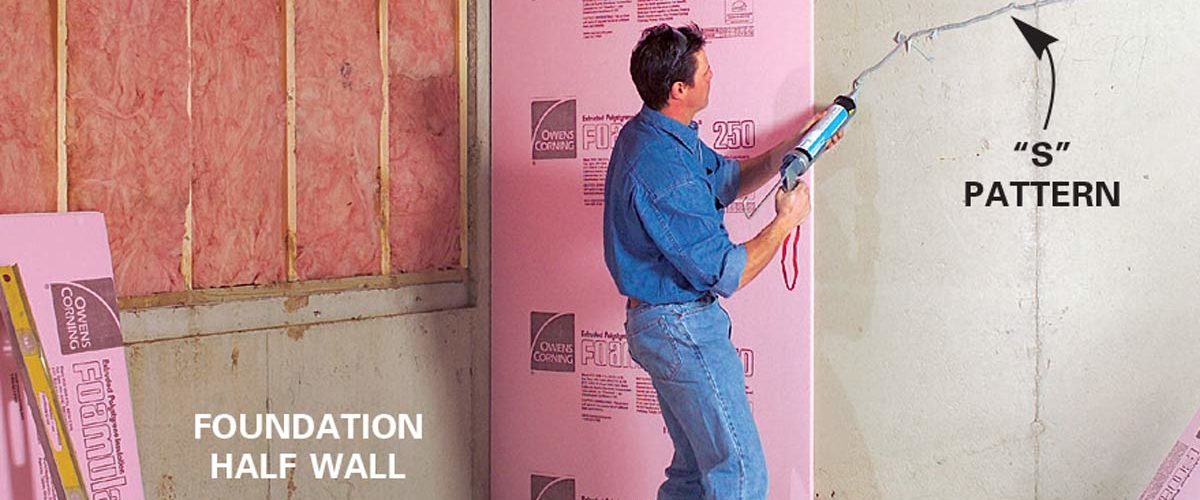The first step to take towards insulating your basement wall is installation of polystyrene insulation. Most experts recommend the use of all purpose adhesives that are approved for use with Styrofoam products. After the basement has polystyrene insulation installed, tape all joints with an adhesive tape that will adhere to polystyrene insulation installations, like Tyvek tape. Taping the insulation joints will help keep out moisture, and prevent any cold air from getting into the cavity of the stud wall.
It is recommend that the top and bottom of the insulated foam board be sealed using a canned spray foam sealant. You can purchase spray foam sealant, like Great Stuff, and most hardware or home improvement stores. Make sure you seal those joints as tightly as possible. You need to also make sure that your foam board is installed on top of the basement’s concrete wall. Get the foam board up tight against the wall plate and seal it completely.
The next step is to frame the basement wall. This can be done simply, with two slight modifications of traditional wall framing techniques. Most experts recommend installing a piece of composite decking like TimberTech on the wall slab. You should use powder actuator tools to shoot the decking into the slab, taking care that the decking goes under where the bottom wall plate will rest.
Installing composite decking ensures water will not wick into the basement wall should there ever be any flooding or other leaks of water into the basement. The second modification is to frame the wall using a bottom plate that’s been pressure treated. Then the first floor joists into the top plate, followed by the bottom plate being nailed into the composite decking. Make sure to plumb the wall with a level.
Now you can begin to insulate the stud wall’s cavity. You have many different insulation options available. You can insulate your basement’s walls with fiberglass insulation. You can also use “wet” nozzle-sprayed cellulose type insulation, or you could choose spray foam insulation. The most durable type to insulate your basement walls with is fiberglass insulation.
Don’t neglect your rim joists; they will need insulation as well. Rim joist insulation is a vital part of insulating your basement. Where there are several options to use, including sprayed, fiberglass, and foam board insulation, experts recommend using foam board insulation if you are doing this yourself.
The final step to insulate your basement is installing some sort of finished surface for your basement walls. While most homes use an installation of regular drywall in a basement, you aren’t strictly limited to this material. Install whatever finished surface you feel will look best.
There are many advantages to insulating your basement. Insulated walls will help to keep your entire home both warmer and drier. A basement that is insulated properly and creates an effective barrier against the elements reduces the amount of moisture that enters into your basement from the house’s concrete walls. No matter what the weather, concrete always has some buildup of moisture. This is why it’s very important to make sure materials like fiberglass insulation and wood are kept away from the basement’s concrete surface. When you take the time to make sure you have properly insulated your basement, you will be able to enjoy the comfort and extra space of your basement for years on end, with very little maintenance afterwards.



